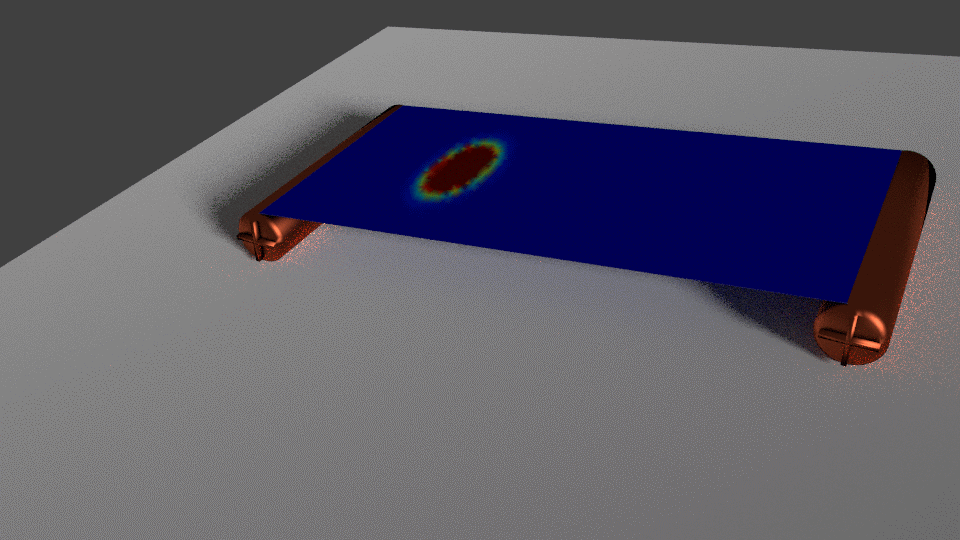Research
Dynamics, vibrations, and mechanics in Atomic Force Microscopy



An Atomic Force Microscope (AFM) consists of a sharp tip mounted on the end of a cantilever. The tip is brought into contact with a sample and the response of the cantilever is monitored by an optical beam system. Based on the response of the cantilever information about the sample topography, mechanics, thermal properties, and electrical properties can be inferred. Our lab has studied the nonlinear oscillations of the cantilever interacting with a sample, the contact mechanics of the cantilever tip interacting with a sample, and leveraging the electrical interactions between the tip and sample for subsurface imaging. These studies have helped scientists worldwide in nanoscience and nanotechnology to interpret images, and improve metrology, speed, and compositional contrast while scanning over a wide range of samples such as living cells, bacteria, viruses, composite materials, and semiconductor devices We developed and run the Virtual Environment for Dynamic Atomic Force Microscopy (VEDA) off nanohub.org, which is currently one of the most used AFM simulation softwares in the world.
Biomechanics of living cells

Utilizing our core knowledge in AFM, we are working with biophysicists in developing new tools for biomechanical assays of living cells and viruses with the ultimate goal of helping cancer specialists and scientists understand the mechanical properties of cancer cells and viruses. These studies included specialized dynamic AFM modes optimized for nanomechanics measurements on cells and developed of a unique combined spining disk confocal AFM system that enables optical visualization of the indentation of a living cell with by the AFM cantilever tip. Ultimately, the hope is that nanomechanical assays of cells, bacteria, and viruses can help personalized medicine and the early detection of disease.
Micro-electromechanical system dynamics

We are studying the nonlinear dynamics of micro-electromechanical systems (MEMS) such as radio-frequency (RF) switches that could be used in weapons stockpiles and high-performance wireless communication systems in order to improve their reliability and to monitor their health.
Human posture dynamics

We are working with the department of human kinesiology to consider how nonlinear dynamics can be used to reduce risk of fall of the billion plus prople who are either elderly, or suffer from neurological disease (Alzheimer's, Parkinson's, Multiple sclerosis, etc.), or from plantar neuropathy due to diabetes, or are recovering from concussions, stroke, or cancer treatment. We presenting new ways of identifying from experimental measurements of human sway (upright oscillations) whether or not a subject may suffer from neuromuscular disorders such as Parkinson’s disease or multiple sclerosis or may be particularly susceptible to stumbling and falling. We have built a robotic balance board with tunable stiffness and timedelay to help customize balance training for populations with balance deficits.
Thermomechanics and Vibrations of moving webs


Temperature field of an axially moving PET web under Gaussian shaped heat flux with speed from 0 to 6m/min
The era of Internet of Things (IoT) requires the development and deployment of extremely low-cost printable sensors and communication devices. Roll-to-Roll flexible electronics manufacturing is a rapidly developing industry these days with the goal to print functional devices and sensors on flexible substrates at scale and for low cost. In this research we are focusing on the thermomechanics and vibrations of thin flexible webs with printing, heating, coating, curing, and drying processes typical of flexible electronics manufacturing and nanomanufacturing applications. The goal is to improve quality control and stability of these manufacturing process as throughputs continue to increase.
Active research grants
NSF, CMMI, GOALI: Multi-frequency dynamics in the Atomic Force Microscope, 2017-2020, $ 542K. PI, co-I’s A. Bajaj and R. Reifenberger.
Past research has been supported by the following agencies and industrial sponsors

